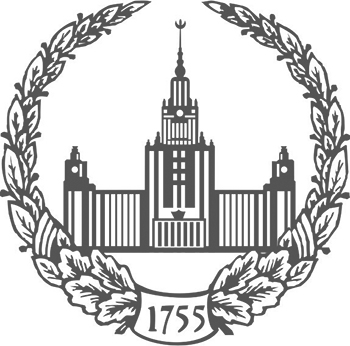
-
The Church of Intercession on the Nerl’ and the Cathedral in ModenaMoscow University Bulletin. Series 8: History 2019. N 3. p.161-181read more1307
-
The article considers the relationship between the architectural forms of the small church of Intercession on the Nerl’, the most important and probably the most renowned monument of the mid-12th-century Vladimir- Suzdal’ architecture, and the enormous diocesan Modena cathedral, which was founded in 1099 and then built until the second half of the 20th century. According to the later, not fully verified tradition, the Church of Intercession was erected in 1165 by order of Prince Andrei Bogolyubsky (1157–1174) as a church of a small monastery (this date can be considered relatively reliable). In the course of the study, it became evident that most of the forms of the Church of Intercession on the Nerl’ belong to the Italian version of the Romanesque style. Moreover, a significant part of these forms has direct analogues in the slightly earlier architecture of the cathedral in Modena, the most important and complex building of Romanesque architecture in the historical region of Emilia. Some forms of the Church of Intercession are lacking in the cathedral of Modena, and this fact evidently indicates to the “combined” structure of the Romanesque team that came to Russia to erect buildings commissioned by Prince Andrei Bogolyubsky: its core consisted of the masters associated with Modena cathedral, but there were also masters from other centers of Northern Italy or those who reproduced the architectural style of these cities. Nevertheless, Modena cathedral can be viewed as the principal source of the elements of the Church of Intercession and Prince Andrei’s earlier buildings — the Assumption Cathedral in Vladimir (1158–1160) and the Church of the Nativity of the Virgin at neighbouring Bogolyubovo. One can indicate Modena as the “home address” of the team, who, though not blindly copying formal elements and following stylistic programme of Modena Cathedral in some cases developed or only modified it.
Keywords: Russian art; Early Rus’; Vladimir-Suzdal’ principality; Old Russian architecture; Romanesque architecture; relations of Italy and Russia
-
-
Concerning the anthropomorphism of ancient Russian churchesMoscow University Bulletin. Series 8: History 2020. N 3. p.161-180read more1309
-
The article concerns the still completely unexplored issue of the possible anthropomorphic perception of the Old Russian churches. The work is based on the study of Old Russian written sources, mainly chronicles, as well as inventories, charters, lives, travel descriptions. The information extracted from written sources is grouped in the article by individual words, which were used by Old Russian writers as anthropomorphic terms when describing the church: “top”, “head”, “forehead”, “neck”, “under head”, “shoulders”, “belt”, “foot”. Some documents contain single terms or their pairs; there are examples of a more consistent use of several terms concurrently. Chronologically, anthropomorphic terms were common in Old Russian literature throughout its history, that is, from the 11th to the 17th centuries. They are found in an extensive range of documents. A careful examination of the terms has revealed that the Old Russian church was described in approximately the same way as a human figure, and the objects were described sequentially from top to bottom. Similar descriptions with the same sequence, using similar anthropomorphic terms, are found in Italian and post-Byzantine painting manuals, where a proportional analysis of the human figure is given. Some anthropomorphic terms similar to the Old Russian ones are found in Byzantine descriptions of temples or in the form of separate words. It can be assumed that the Old Russian set of anthropomorphic terms is of Byzantine origin. The comparison with the human figure, that arises when one reads such descriptions, is a likely key to understanding the proportions of ancient Russian churches, which were interpreted through the prism of human proportions and their standards of the time. The proposed approach also permits more extensive use of historical, written terms in contemporary art history literature. The range of anthropomorphic terms describing the architecture of ancient Russian churches is quite wide and well documented. Perhaps it will be expanded in the future, but already now, on its basis, it is possible to enrich the understanding of architecture in medieval Russia.
Keywords: Old Russia; Old Russian architecture; churches; chronicles; charters; inventories; proportions in architecture; Ancient and Byzantine sources; possible Byzantine origin
-
-
The Parallel Texts in the History of Russian Medieval Art: Three Ekphrases in the Novgorod Chronicles of the Second Quarter of the Sixteenth CenturyMoscow University Bulletin. Series 8: History 2024. Vol.65. N 6. p.203-233read more280
-
The article analyses three texts from the second quarter of the 16th century, dedicated to works of ecclesiastical art and architecture, and contained in the Novgorod chronicles. These can be identified as three precisely dated entries, in which individual objects and complexes created in Novgorod on the orders of the Novgorod Metropolitan Macarius and the abbot of the Novgorod Khutyn Monastery Theodosius are described in considerable detail. The first text, which represents a true ekphrasis, describes the royal gates of the iconostasis of the Novgorod St. Sophia Cathedral and the monumental painting adorning the western facade of the cathedral (1527/1528). The second text provides a detailed description in 1533. Finally, the third chronicle entry, dated 1535, discusses the Church of St. Gregory of Armenia in the Novgorod suburban monastery of the Transfi guration of the Savior at Khutyn. The architectural design of the church is notable for its octagonal shape, the presence of five entrances, the positioning of bells at the uppermost point, and the crowning of the structure with a solitary dome. The chronicle names the architect of this building — the Tver master Ermola — and emphasizes that there were no such buildings in the city before, although the church of 1535 was preceded by a small bell tower church from 1445, built at the request of the Novgorod Archbishop Euphemios II. The descriptions under consideration in this article are distinguished not only by literary processing, as evidenced by the use of elevated epithets and the highlighting of the unusualness of the objects and their sizes, but also by attention to detail. This attention enabled the author of the Novgorod ekphrases to “see” not only the number of corners, sculptures, or icon inserts, but also some features of the forms. These texts can be regarded as early manifestations of an inclination towards aesthetic form, which can be termed an interest in art in general. The descriptions are incomplete and fragmented, but they already reveal a historical and persistent view, characteristic of the scribes of the late Middle Ages.
Keywords: early Russian art, applied arts, St. Sophia Cathedral in Novgorod, Novgorod Khutyn Monastery, ekphrasis, chronicle, description of art objects, description of buildings
-


